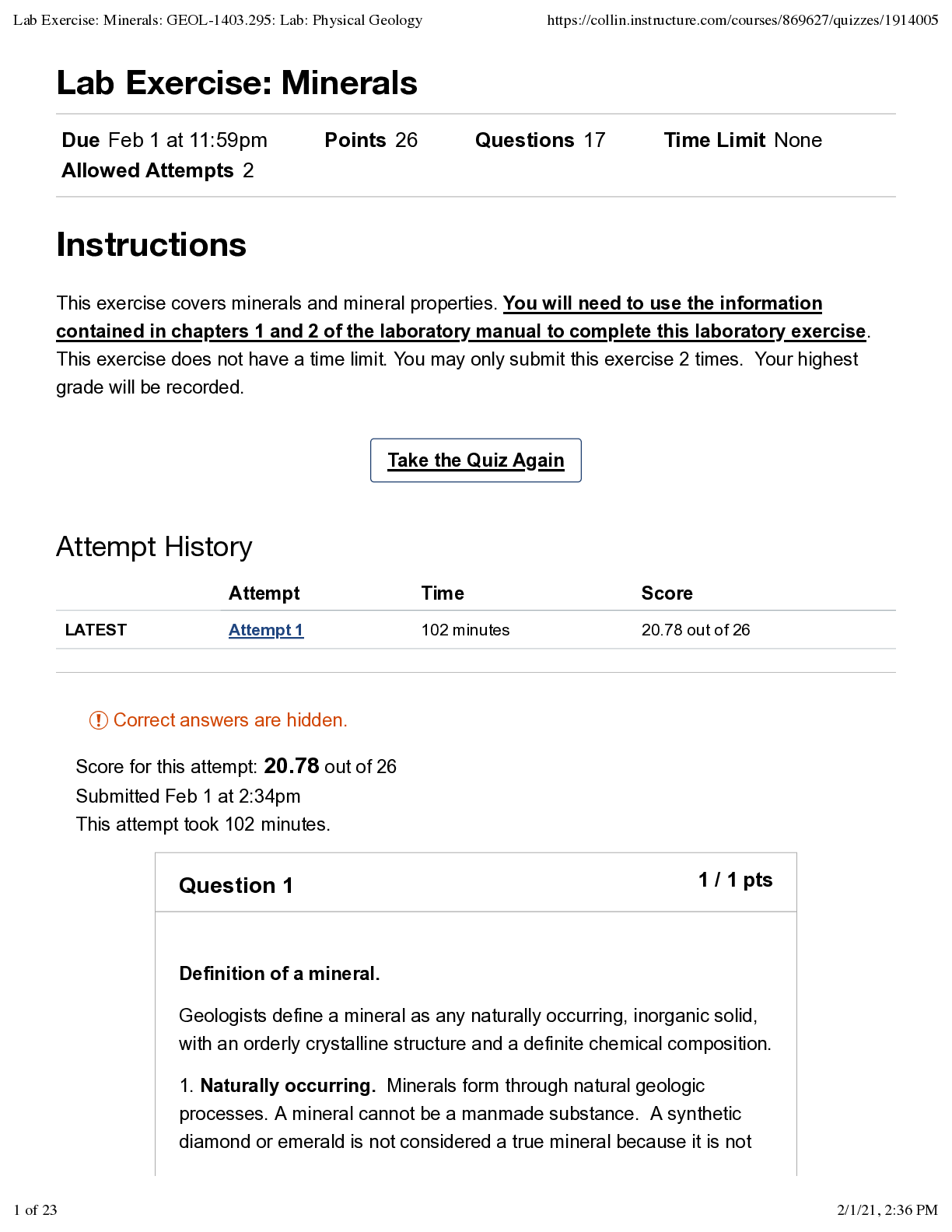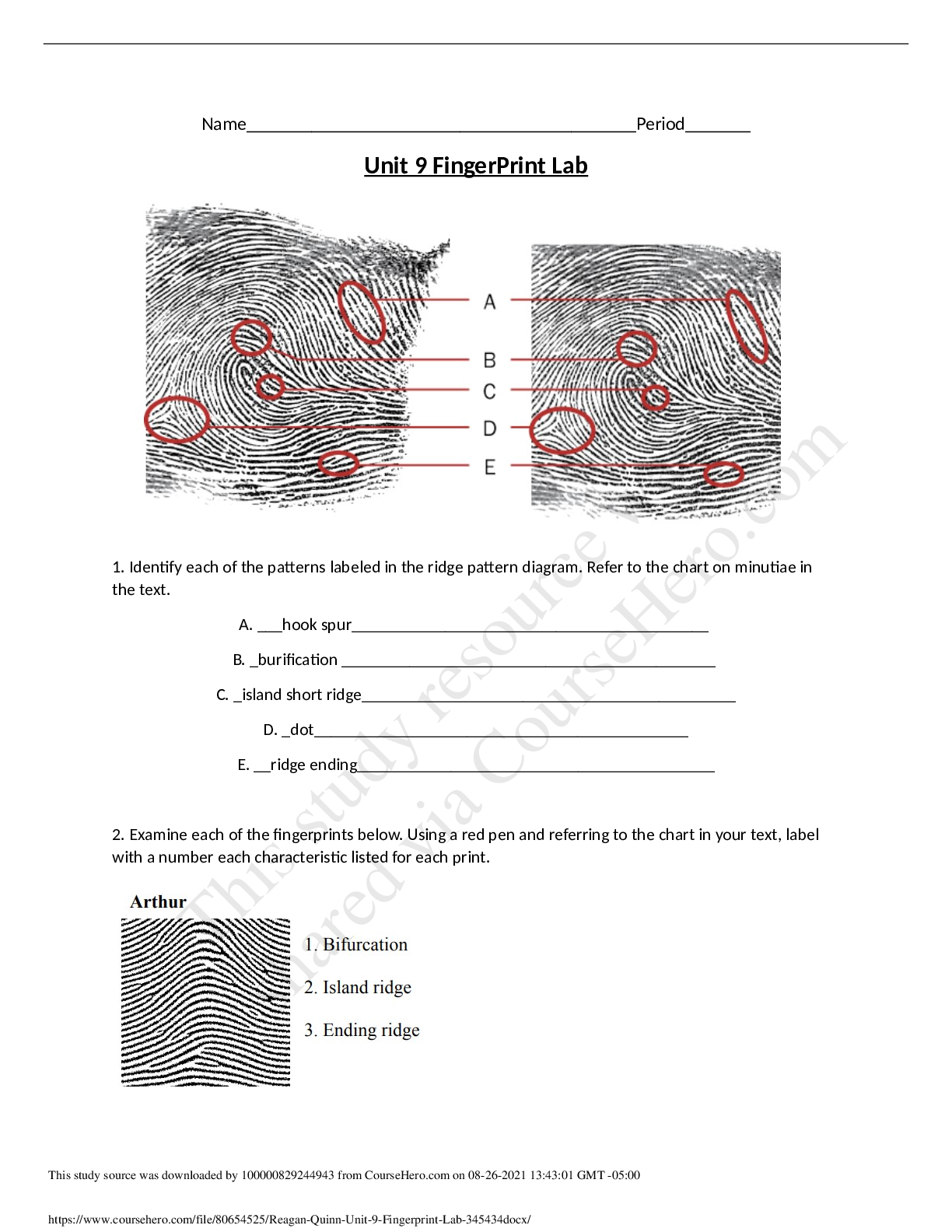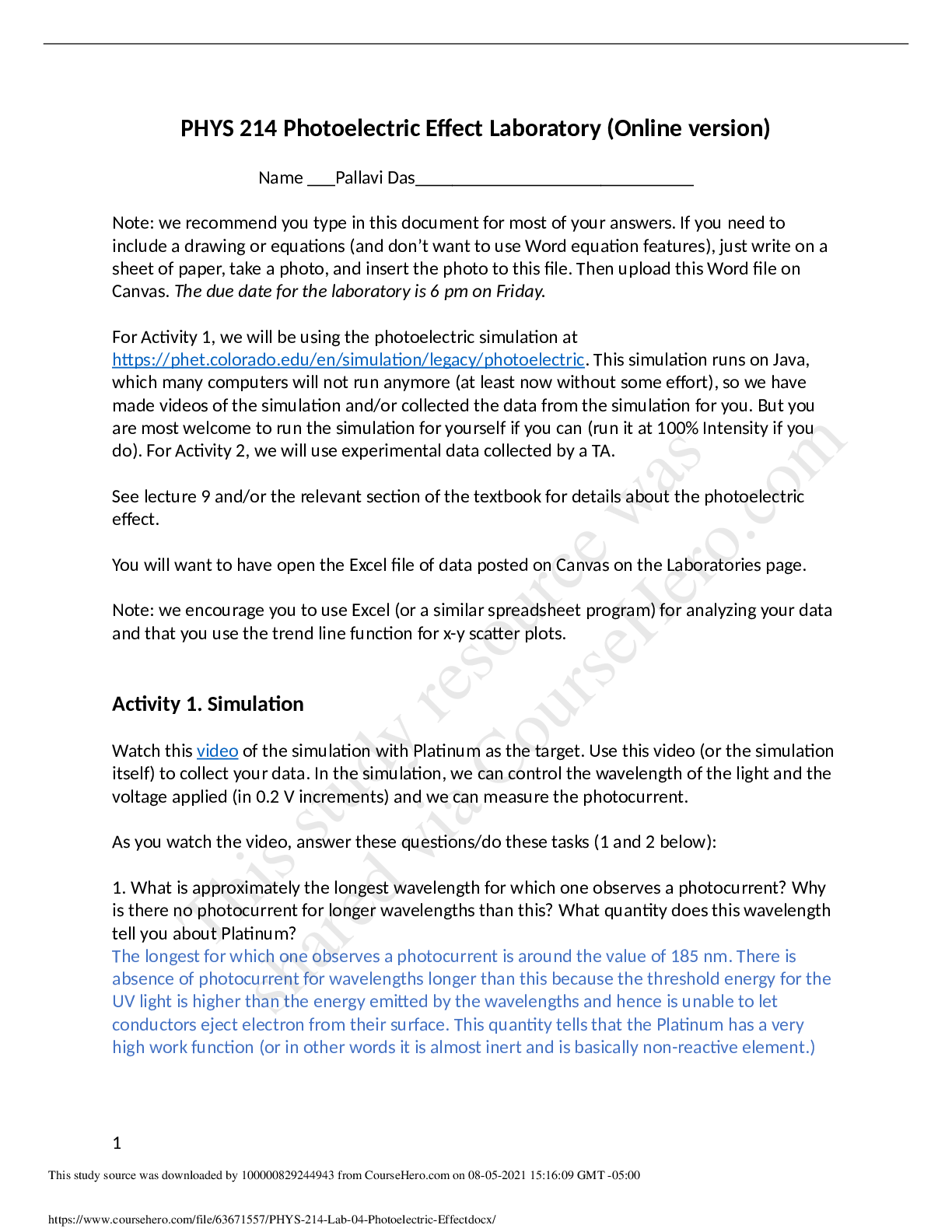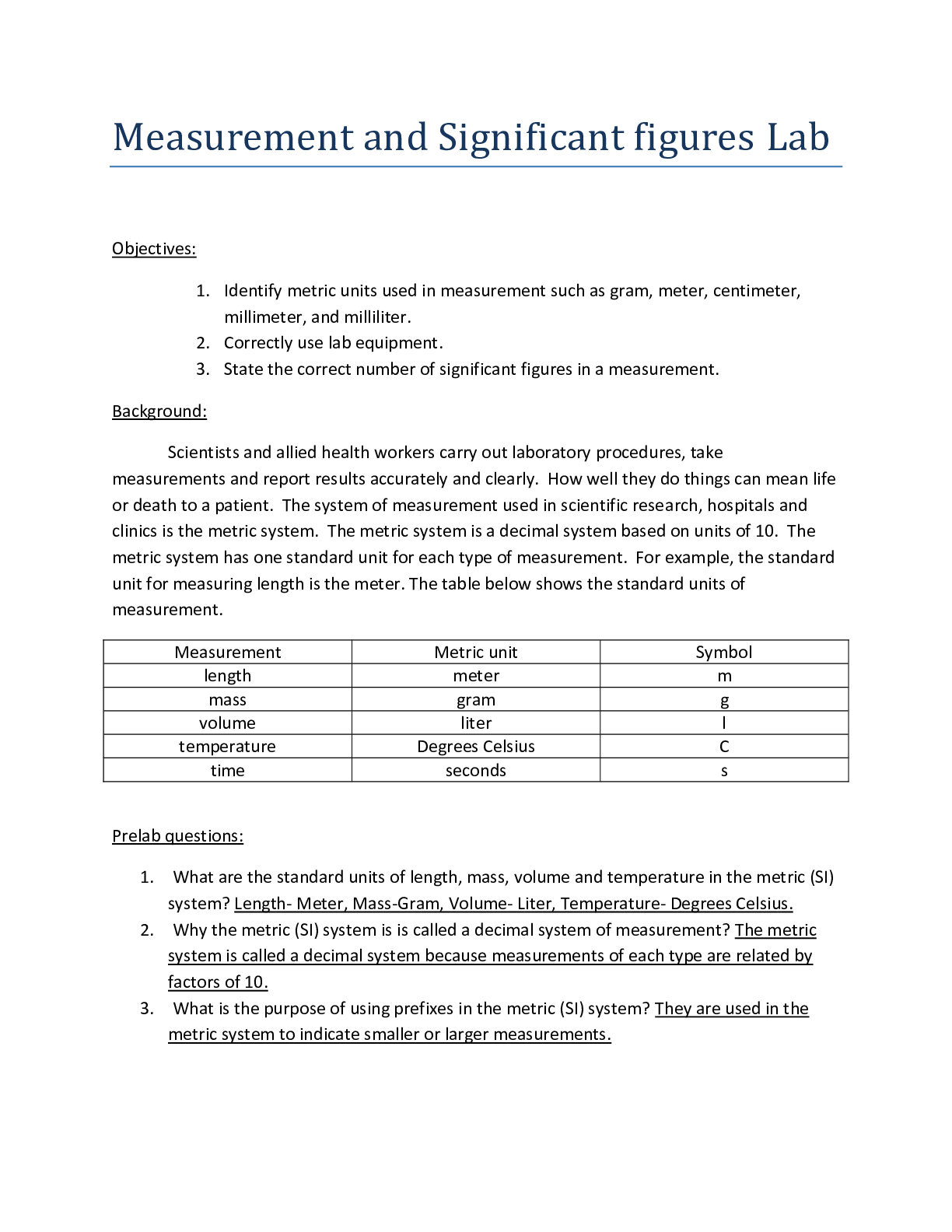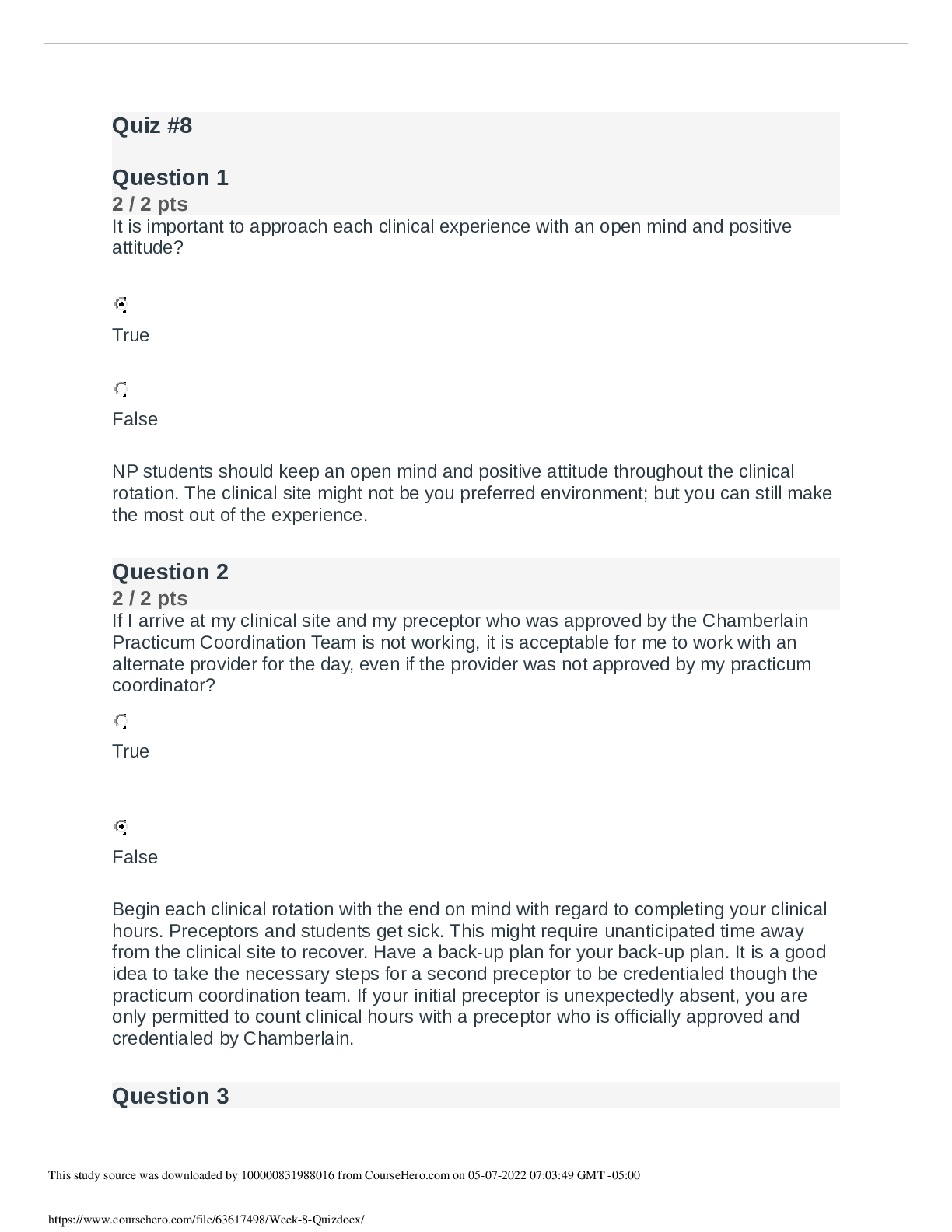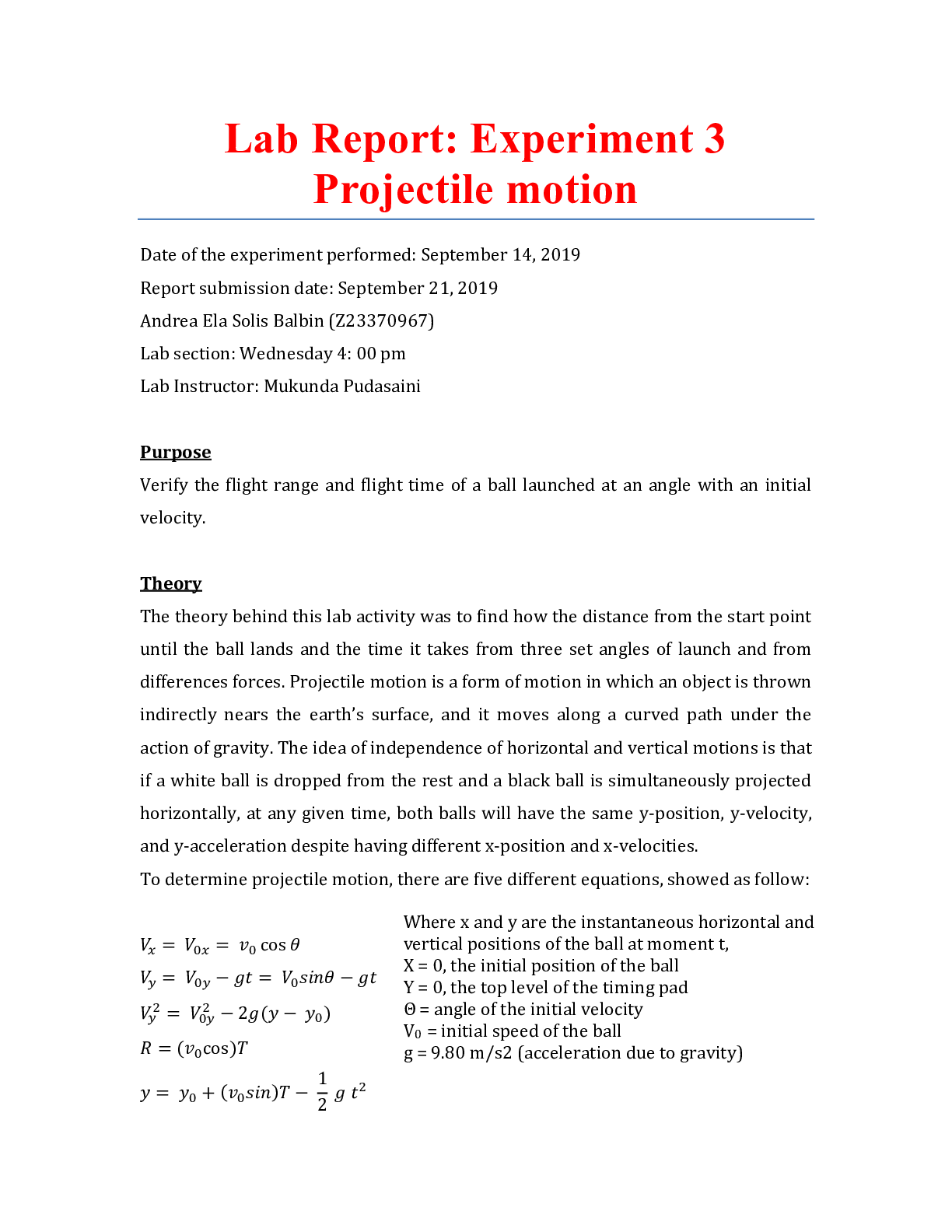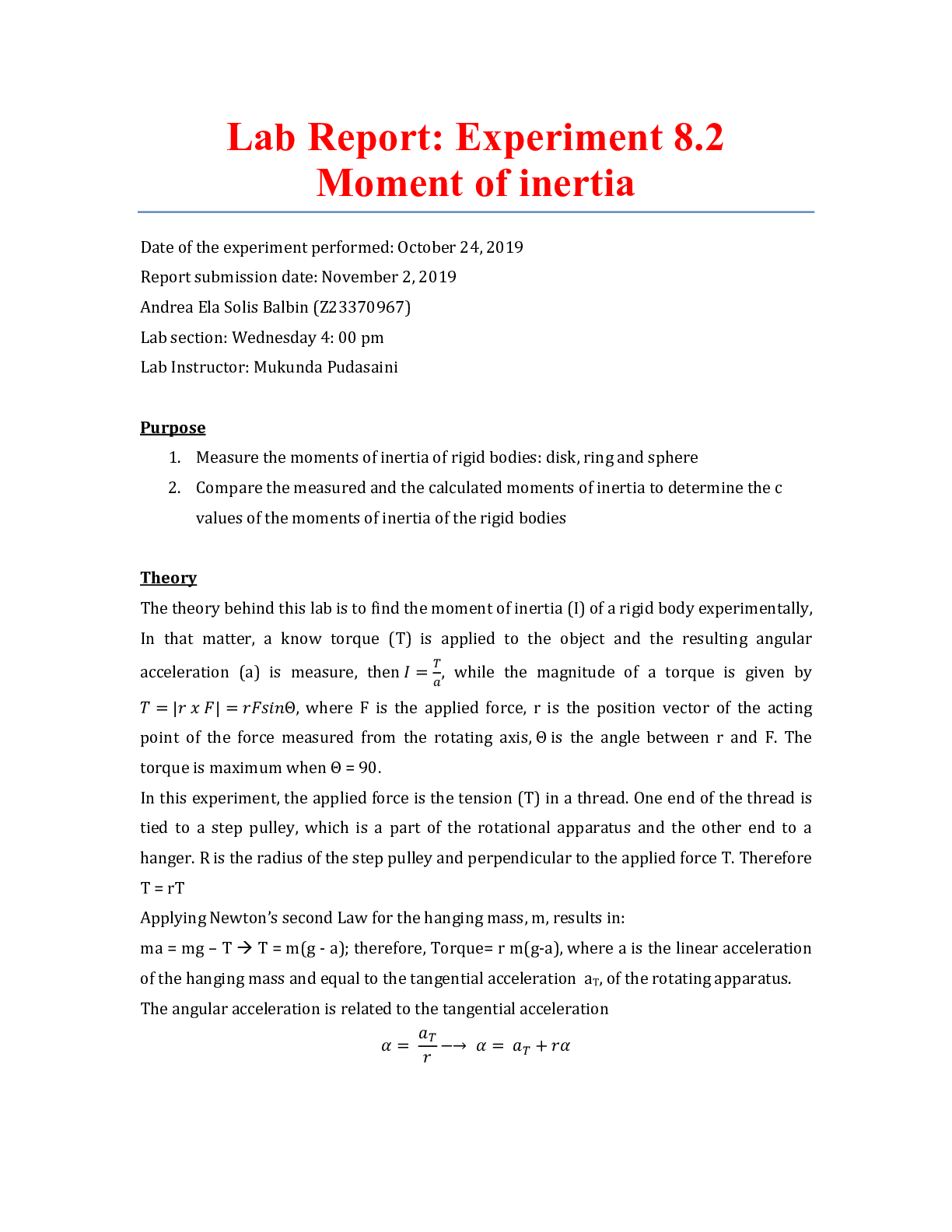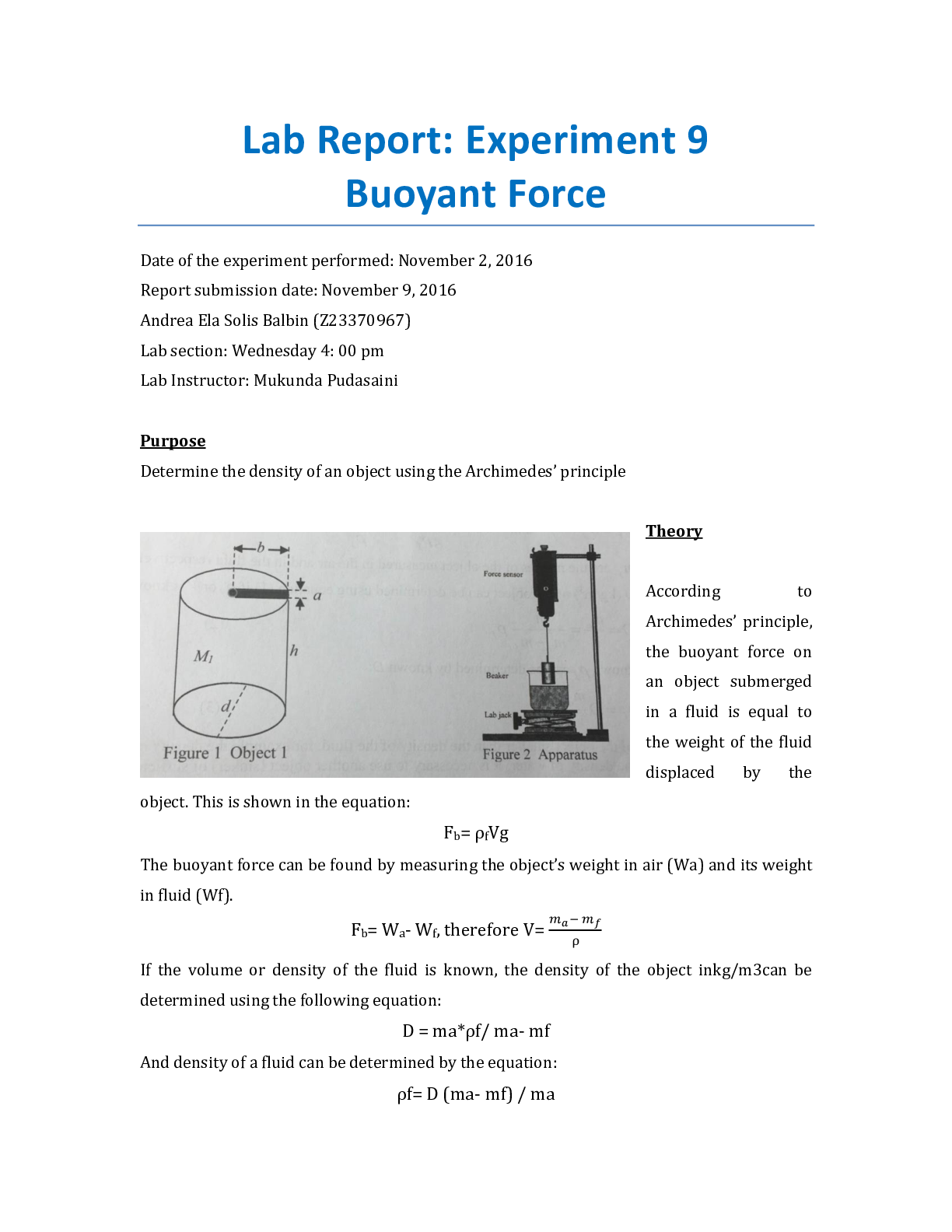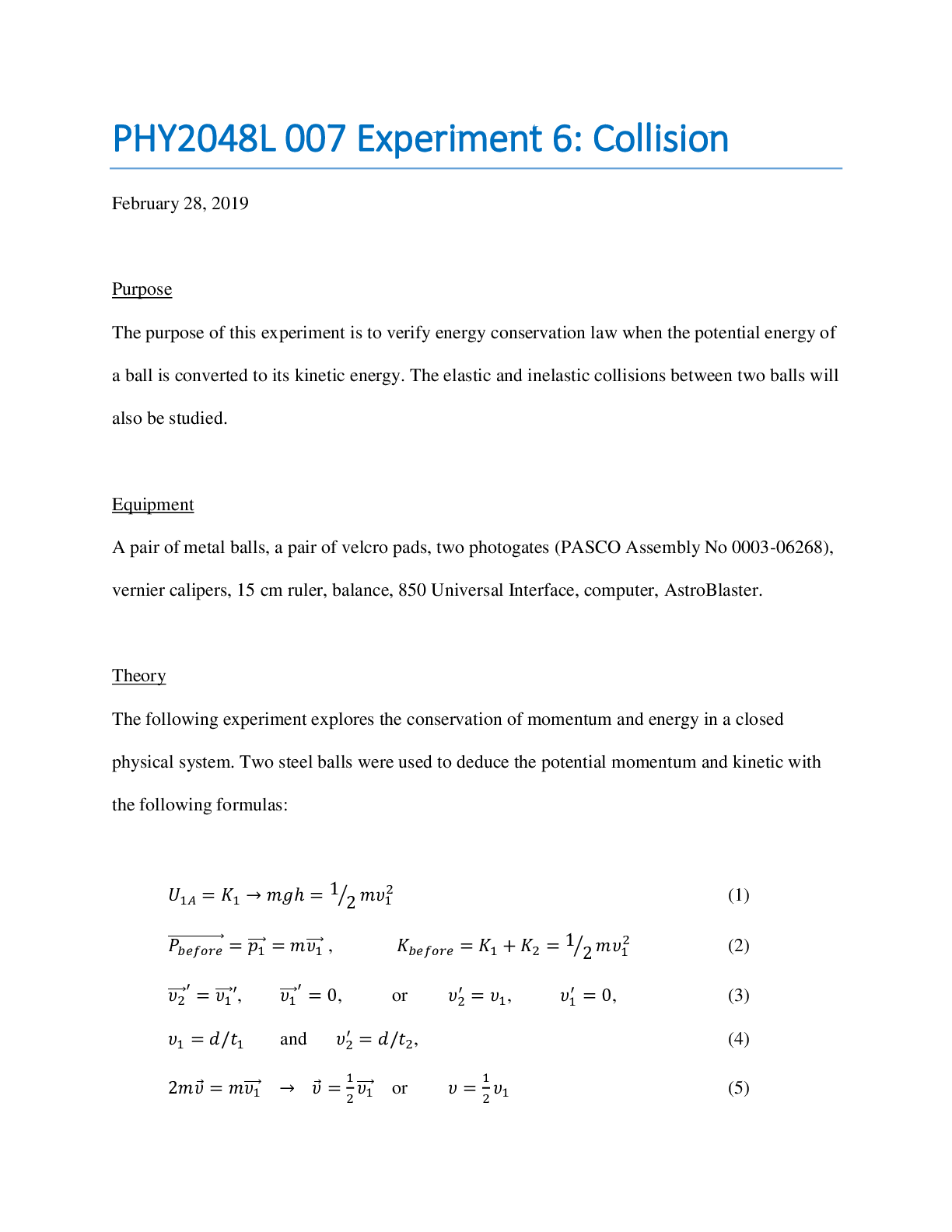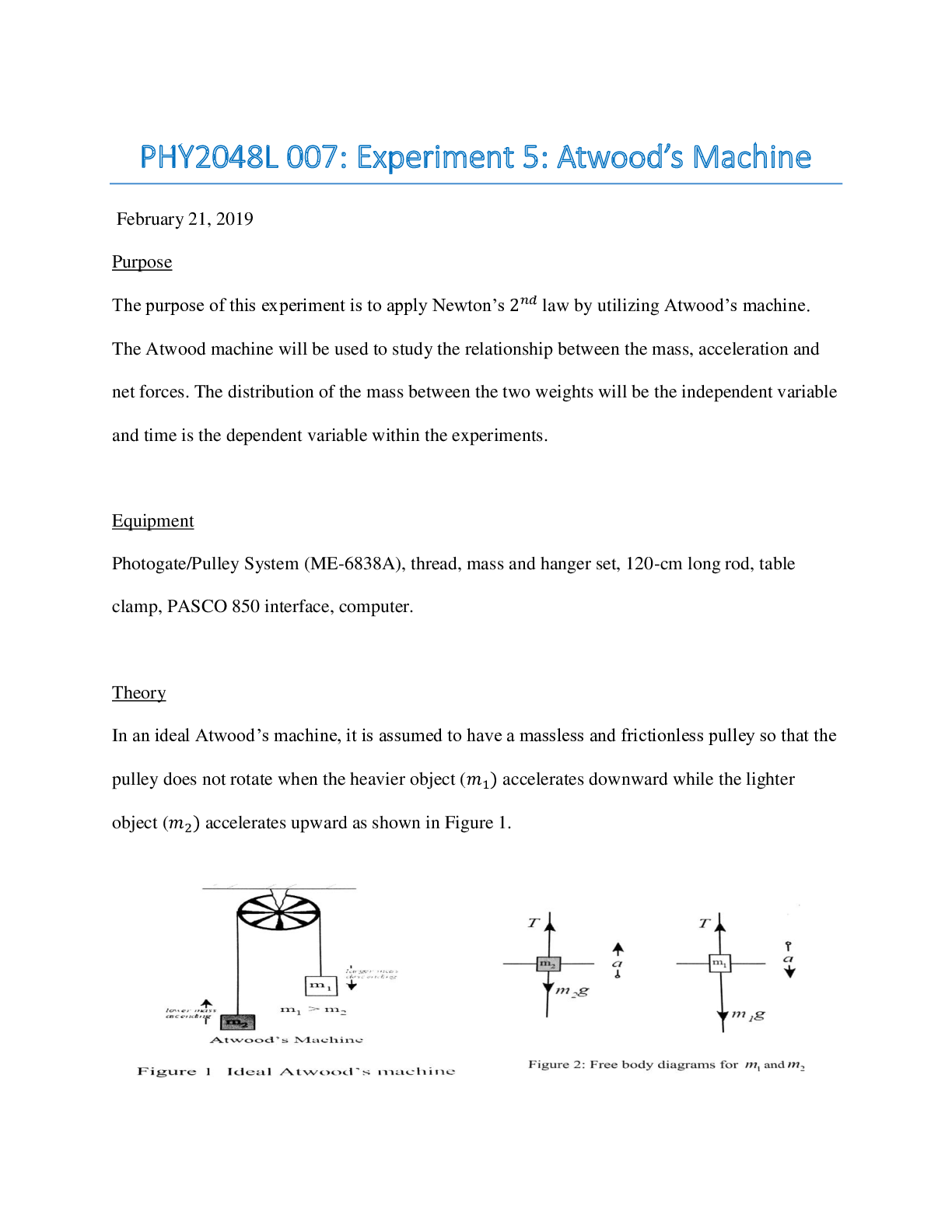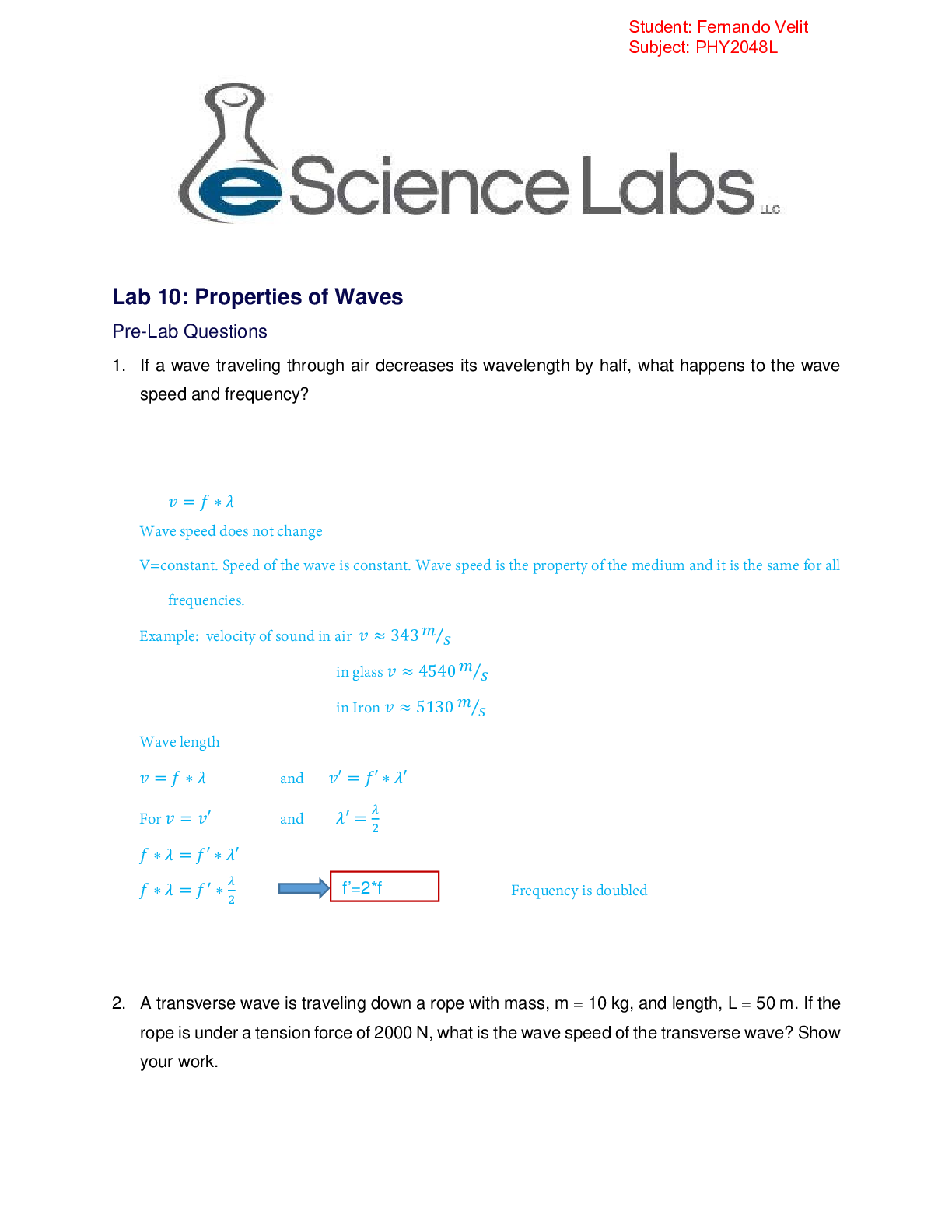Chemistry > Lab Report > General Chemistry Polymerization lab (All)
General Chemistry Polymerization lab
Document Content and Description Below
Introduction The purpose of this experiment is to study and perform two key methods of polymer formation. These methods include addition polymerization and condensation polymerization, in which many... monomers react to form long chains. Addition polymerization is used to produce poly(methyl acrylate) while condensation polymerization is used to produce nylon 10-6. Addition polymerization is started with the help of an initiator, or free radical. This radical forms a bond with a monomer. This monomer then becomes a radical, which in turn bonds with more monomers to create a polymer. To create poly(methyl acrylate), methyl acrylate is reacted with potassium bromate and sodium hydrogen sulfate. In order to prove that true poly(methyl acrylate) was formed, infrared spectra of methyl acrylate and poly(methyl acrylate) are compared. The spectra should differ from 675 to 1250 nanometers, proving that poly(methyl acrylate) was formed. Condensation polymerization involves two molecules bonding with each other and eliminating a small molecule. In this case, that small molecule is HCl. To create nylon, hexamethylene diamine is reacted with sebacoyl chloride to form the copolymer nylon 10-6. The percent yield of nylon is to be determined by comparing the amount of nylon obtained from the experiment (actual yield) to the amount of nylon that should be produced (theoretical yield). The theoretical yield can be calculated using stoichiometry. Experimental A. Formation of Poly(methyl acrylate): 1. Wear gloves and perform in a hood. 2. Pour 60 mL of 5% methyl acrylate into an Erlenmeyer flask. 3. Add 1 mL of 0.1 M potassium bromate. 4. Add 1 mL of 0.45 M sodium hydrogen sulfite. 5. Mix the flask. Wait 15 minutes while shaking the flask occasionally. 6. Pour the flask contents into 60 mL of 5 M sodium chloride. 7. Remove the polymer mass. 8. Wash the polymer mass and knead it under water. Repeat once or twice. 9. Record any observations throughout the procedure. B. Preparation of Nylon 10-6: 1. Pour 20 mL of 20% NaOH to a 50 mL beaker. 2. Add 10 mL of 5% hexamethylene diamine. 3. Slowly pour 10 mL of 5% sebacoyl chloride down the side of the beaker. 4. Scrape off the nylon on the walls of the beaker. 5. Wind as much nylon as possible around a test tube. Do not touch with hands. 6. Place the test tube and nylon in a beaker filled with water. 7. Observe as the thickness of the nylon decreases [Show More]
Last updated: 1 year ago
Preview 1 out of 5 pages
Instant download

Buy this document to get the full access instantly
Instant Download Access after purchase
Add to cartInstant download
Reviews( 0 )
Document information
Connected school, study & course
About the document
Uploaded On
May 29, 2021
Number of pages
5
Written in
Additional information
This document has been written for:
Uploaded
May 29, 2021
Downloads
0
Views
41




